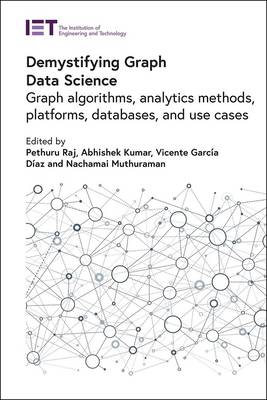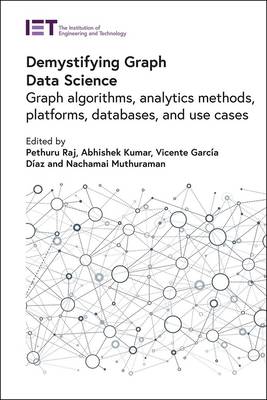
En raison d'une grêve chez bpost, votre commande pourrait être retardée. Vous avez besoin d’un livre rapidement ? Nos magasins vous accueillent à bras ouverts !
- Retrait gratuit dans votre magasin Club
- 7.000.000 titres dans notre catalogue
- Payer en toute sécurité
- Toujours un magasin près de chez vous
En raison de la grêve chez bpost, votre commande pourrait être retardée. Vous avez besoin d’un livre rapidement ? Nos magasins vous accueillent à bras ouverts !
- Retrait gratuit dans votre magasin Club
- 7.000.0000 titres dans notre catalogue
- Payer en toute sécurité
- Toujours un magasin près de chez vous
Demystifying Graph Data Science
Graph Algorithms, Analytics Methods, Platforms, Databases, and Use Cases
259,45 €
+ 518 points
Description
With the faster maturity and stability of digitization and edge technologies, zillions of digital entities, connected devices, and microservices interact purposefully to create huge sets of poly-structured digital data. Corporations are continuously seeking fresh ways to use their data to drive business innovations and disruptions to bring in real digital transformation. Data Science (DS) is proving to be the one-stop solution for simplifying the process of knowledge discovery and dissemination out of massive amounts of multi-structured data. Data analytics and AI capabilities have thus laid down a stimulating foundation to visualize fresh possibilities and opportunities to facilitate digital living in an increasingly connected world. Supported by query languages, databases, algorithms, platforms, analytics methods and machine and deep learning (ML and DL) algorithms, graphs are now emerging as a new data structure for optimally representing a variety of data and their intimate relationships.Graph analytics is being touted as the best way forward compared to traditional analytics methods. The connectedness of data points facilitates the identification of clusters of related data points based on levels of influence, association, interaction frequency and probability. Graph analytics is being empowered through a host of path-breaking analytics techniques to explore and pinpoint beneficial relationships between different entities such as organizations, people and transactions. This edited book aims to explain the various aspects and importance of graph data science. The authors from both academia and industry cover algorithms, analytics methods, platforms and databases that are intrinsically capable of creating business value by intelligently leveraging connected data.
Spécifications
Parties prenantes
- Editeur:
Contenu
- Nombre de pages :
- 415
- Langue:
- Anglais
- Collection :
Caractéristiques
- EAN:
- 9781839534881
- Date de parution :
- 28-11-22
- Format:
- Livre relié
- Format numérique:
- Genaaid
- Dimensions :
- 157 mm x 241 mm
- Poids :
- 816 g

Les avis
Nous publions uniquement les avis qui respectent les conditions requises. Consultez nos conditions pour les avis.





